
7 minute read
MIDDLE MARKET MOVES
Amid headlines of price drops and estate agencies suffering huge income reductions (don’t all cry at once), our London Q1 results were better – volumes and fee income – this year, than last. How come?
Surprisingly to many, our first quarter figures for London, when compared with 2017, show a modest but inflation-beating increase in income, and in the number of transactions, for both sales and lettings. Given the low level of Land Registry recorded sales over the last year and the decline in many areas in capital values and rents, does this mean that Jackson-Stops London has, through market-bucking brilliance, succeeded, whilst all around have failed? We’d like to think that there is a bit of that but, for the most part, it is a result of the spread of markets in which we operate, few of which have been as dramatically affected as the headlines might suggest.

To start with, our London business has always been evenly balanced between sales and lettings. Historically, this has meant that we’ve been OK throughout the traditional see-sawing of the fortunes of the two. In recent years, it has also meant that we have been well-placed to help the growing number of owners who would be happy to sell or let, so long as the deal is right.
In central London right now, demand for large houses to buy, is a fraction of what it was: aggregate Kensington & Chelsea sales recently have been less than 100 per month (LonRes). But top-end rentals have never been so popular: our lettings at £5,000+ per week are over 40% up on last year at the time of writing. This has prompted an even greater increase in supply, as owners prefer to wait out current uncertainties in preference to crystallising any reduction in capital value. Indeed, at all price levels, the question ‘Should I let or sell?’ is being asked of us almost every time a tenancy ends at the moment. Financially, the answer is rarely clear-cut but, for every landlord deciding that it is no longer worth the candle, an owner-occupier moving away for two or three years, opts to let, rather than give up that foothold in London. Rents thus remain soft and it is striking that, across the lettings market as a whole, activity has remained high throughout a period of small but sustained rent reductions.
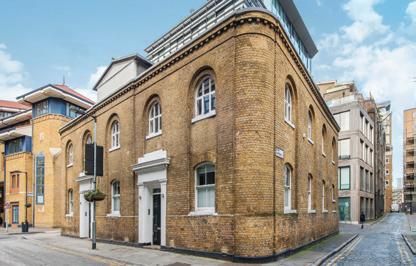

Mid Market Brexit Bets
Secondly – and unusually for a prestige national brand – we have a culture and structure which enthusiastically embraces the middle market. Admittedly, that still means £1 million for a flat in SW1 or a house in SW20, but this is where the sales have been in recent times. It is also where we are seeing fascinating trends now. Specifically, for many months, caution about economic prospects (even hardened London Brexiteers expect pain in the short-term) appears to be prompting movers to stay local. Growing families who would, previously, have moved out from say, Pimlico to Teddington or Weybridge, are either staying put and extending, or moving locally. Chelsea house owners who, on receipt of a good bonus, would almost automatically have bought a country house, are holding cash instead. Most interestingly though, more and more better-off tenants (often supported by family trusts), having actively held back from buying for at least two years, are now looking to buy. This is very much a Brexit bet. Their view is that the worst case scenarios will be avoided, ‘uncertainty’ will not affect the market any more than it has and that, when things become clearer, values will increase. In other words, that if you want to buy, there is no longer any point in holding back.

WHAT ARE YOUR HOLIDAYS FOR?
Having decided to get serious about buying abroad, asking whether to buy into an established tourist development, or away from the conveniences of a managed environment, often throws up more personal questions.
Technically Personalised
Finally, of the areas in which we think we have been stealing a march on our rivals, perhaps the most visible has been our use of technologies. Learning a wealth of valuable lessons from our exceptionally successful New Homes team, we have been introducing engaging technologies such as touchscreen window displays and personalised online advertising. These are producing hard results: so far this year, 44% more prospective buyers have registered with us, than last, generating the competition which reveals what people are willing to pay. This, coupled with the increasing number of middle market buyers who, having been waiting in the wings, are now coming forward, is why we are looking ahead with greater confidence than for some time.
Acting for buyers, we often get drawn into their “journeys”, exploring what they want. For golfers, it is easy: a country club home with leisure facilities, sea and sun. Golf holiday villages are designed to fulfil their every need and make buying and owning simple. True, it is a controlled world in which freedoms to, say, modify property, or indulge in sorts of fun that neighbours might regard as anti-social, are restricted and you’ll have to pay management fees for the privilege, too. But those managers make life convenient and leave you free to enjoy yourself.
Conversely, for lovers of a specific country or region, buying in an enclave aimed at overseas buyers would be an anathema. Better to opt for, say, a little house just off the market square in your favourite historic town to enjoy the pleasures –and the practical challenges – of being ‘the only Brit in the village.’
Most second home buyers, though, fall between these extremes. Practicalities can help set parameters here. If you are able to take longer breaks, a more remote location – say, Paxos, accessible via infrequent ferry from Corfu – is feasible. If not, then Puglia, just across the Adriatic but served by plentiful direct flights, might be better, whilst the frequency and price of flights to Spanish resorts, make them a sensible choice if your usual trip will rarely last more than a weekend.
Talking to seasoned owners who fall into the ‘in between’ category, the happiest seem to be those who have bought an independent home, somewhere that caters for a substantial tourist population, such as the Balearics. Owners can, as much as in the UK, ‘do their own thing’, but within communities with an established infrastructure which exists to support them. It means they have a place that is, and feels like home, yet which is warm and exotic enough to provide a real break. Which, for them and perhaps most of us, is what holidays are for.
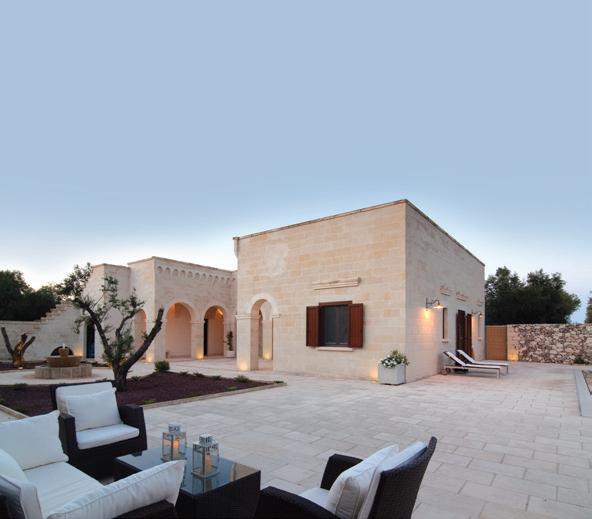
Historically, self-build accounts for an impressive 10% of all new build homes. Financial and lifestyle incentives are pushing interest higher, but it’s still not for the faint-hearted and good plots are rare.
BUILD IT YOURSELF? Gloucestershire £350,000 plot only 16 17

Fantasising about a self-build project has become a common pastime since property TV programmes first hit our screens nearly 20 years ago. The snag for most, though, is that you can’t live in a house that is being built. Without the resources to comfortably fund a building project alongside an existing home, the options are limited and usually – as the TV programmes make clear – physically or financially stressful. Self-build is often practical not only for the sufficiently wealthy, but also for younger first time buyers. For them, both moving in with relatives, and the prospect of caravan life on a building site, are less of a deterrent.
What are the financial attractions to pursuing this challenging path to securing a dream home? Firstup, naturally, is stamp duty. Buyers pay it on the purchase price of the land only. In most cases, this cuts the SDLT bill for, say, a £1 million house on a £300,000 plot from nearly £44,000, to £5,000. (Or, for first time buyers, zero.) Secondly, VAT. You have to be careful here but, in the main, VAT paid out on new build projects and conversions can be reclaimed, theoretically making new build 20% cheaper than an extension of the same size. And finally, unlike most single house developments, self-build projects can qualify for exemption from the local authority Community Infrastructure Levy.
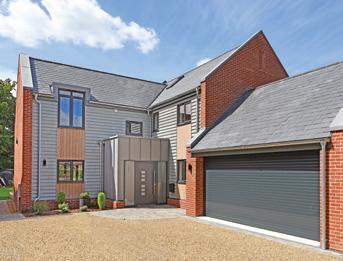
Above: Yorkshire £775,000 guide Converting a barn to residential use usually qualifies for VAT relief.
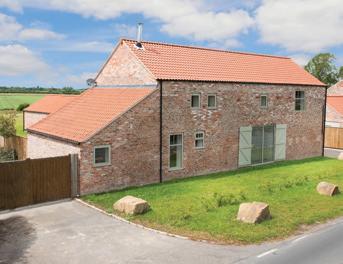
Improving Position For First Time Buyers
It’s still tough out there, especially without family help, but improving incomes, better mortgage products and slower price growth, are all helping.
BORROW WITH PARENTS AND STILL GET FIRST TIME BUYER TAX RELIEF
Very few “self-build” projects are literally that. Most involve architects, builders and project managers. This, along with the desire to have anything but a ‘standard product’ house, tends to eat up the savings made from not having to turn a profit. You do end up with a very special house though.
A mortgage product designed to eliminate liability to CGT has shot up in popularity, because it also allows first time buyers borrowing with parents, to secure exemption from stamp duty.
A rarely used product until recently, Joint Borrower Sole Proprietor mortgages rely on income from more than one person whilst having just one registered as the owner. This matters because when HMRC asks “Have you ever owned or part owned another property?” you must be able to answer ‘No’, to be eligible for first time buyer SDLT exemption (worth £5,000 at the £300,000 limit). We are getting enquiries about this product almost every day now and the number of lenders offering these mortgages is growing.
MANY MORE 95% MORTGAGES
This is a payment demanded by the local authority, theoretically towards any infrastructure used or required by your project and can amount to tens of thousands. Securing exemption is not always easy though, so it is worth raising this early on.
Above: Surrey £1.05 million guide
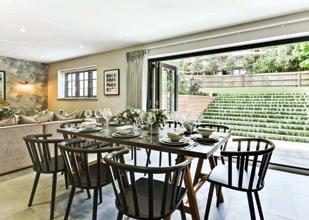
Conventional in form but with much bigger windows and open layouts, this house exemplifies the overlap between what buyers want and planners will allow

Further good news for first time buyers in that the number of lenders offering 95% mortgages has grown from near zero just a few years ago, to over 260 today. This really matters because the need for a 10%+ deposit was excluding large numbers of would-be buyers, despite many paying far more in rent than the cost of the desired mortgage.
IN-VOGUE: HYBRID EXTERIORS
Whether self-build or not, the majority of house plots that become available are ‘in-fills’ between rows of existing housing, usually built between 1910 and 1970. Planning authorities are highly resistant to any new buildings which break established plot lines, or which fail to “acknowledge” their surroundings. Coupled with demand from buyers for much sleeker exteriors and lighter interiors, this has given rise to the distinctive style of the houses shown here: 20th century in shape, 21st in surface. Inside, there is an emphasis on adaptable, connected spaces, high quality finishes, energy efficiency and, increasingly, technology.
MORE LENDERS ‘HELP TO BUY’, MORE
The government’s decision to continue the Help to Buy scheme, which applies only to new build properties, has encouraged more lenders to get involved, and to improve the terms offered. Thus, for example, we can now secure a Help to Buy loan where up to four people are buying one property, with the help of HMG’s interest free, five year loan of up to 20% of the purchase price (40% in London).
For independent advice, contact Private Finance on 0870 600 1650 or jackson-stops@privatefinance.co.uk.


